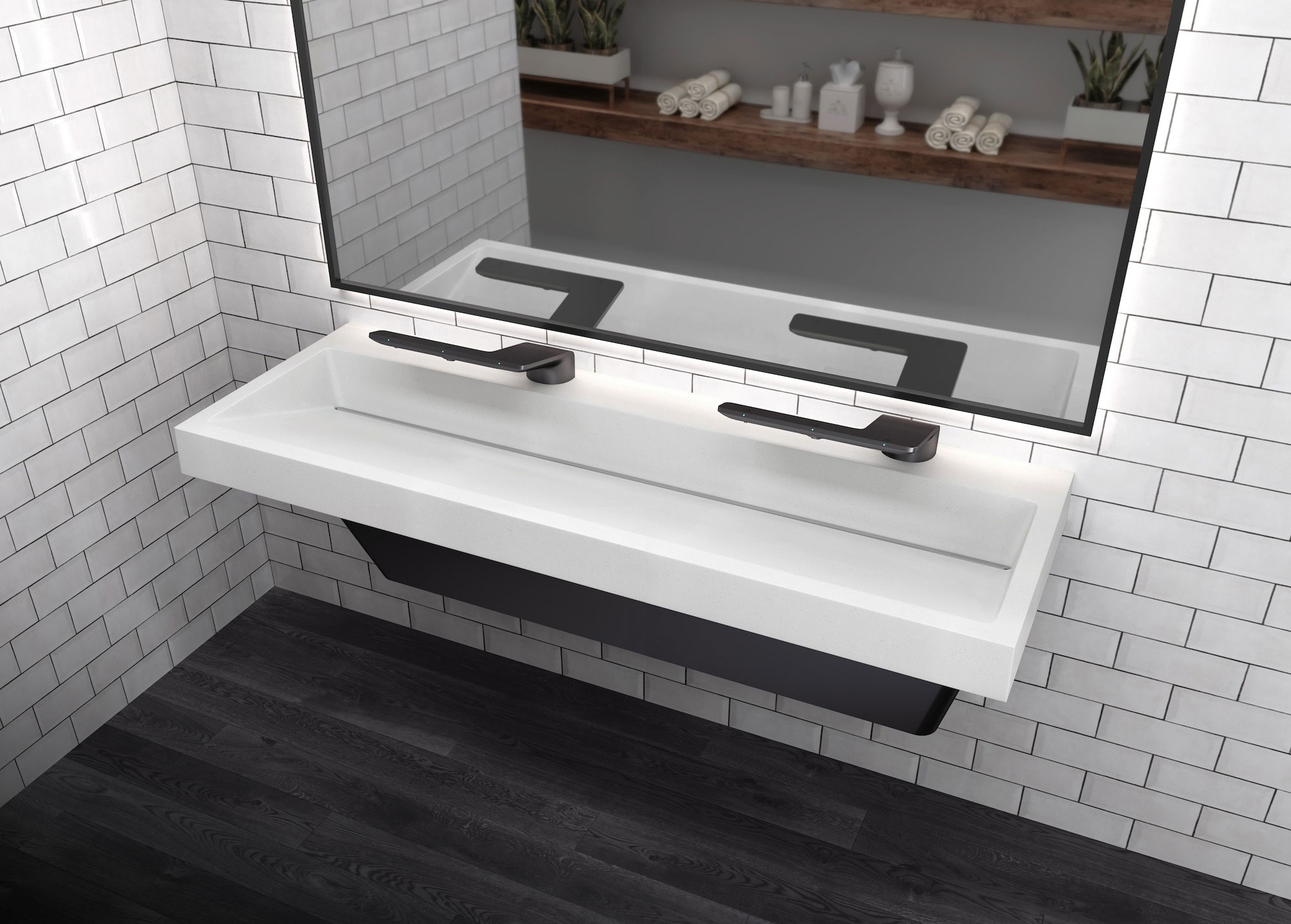
NEARLY FOUR IN FIVE SURVEYED STRESSED THE IMPORTANCE OF TOUCH-FREE OPTIONS IN THEIR OFFICE
Installing touchless fixtures is the best way to make employees feel safer when using workplace restrooms, a survey of office workers has found.
The Healthy Handwashing Survey, from restroom equipment manufacturer Bradley Corp., asked 1,035 American adults about their hand-washing habits, concerns about COVID-19 and their return to the workplace. A subset of 513 respondents who work in offices were identified and asked a series of applicable questions. Participants were from around the country and were evenly split between men and women.
The survey sought to better understand how workplaces — specifically restrooms — have changed since the pandemic began, and to monitor the virus’s impact on hand-washing and related behaviors and attitudes where possible.
Nearly four in five office workers surveyed — 79 percent — said it was either very important or somewhat important to have touchless fixtures in their restrooms. That number was even higher, 84 percent, among the general population during an earlier survey.
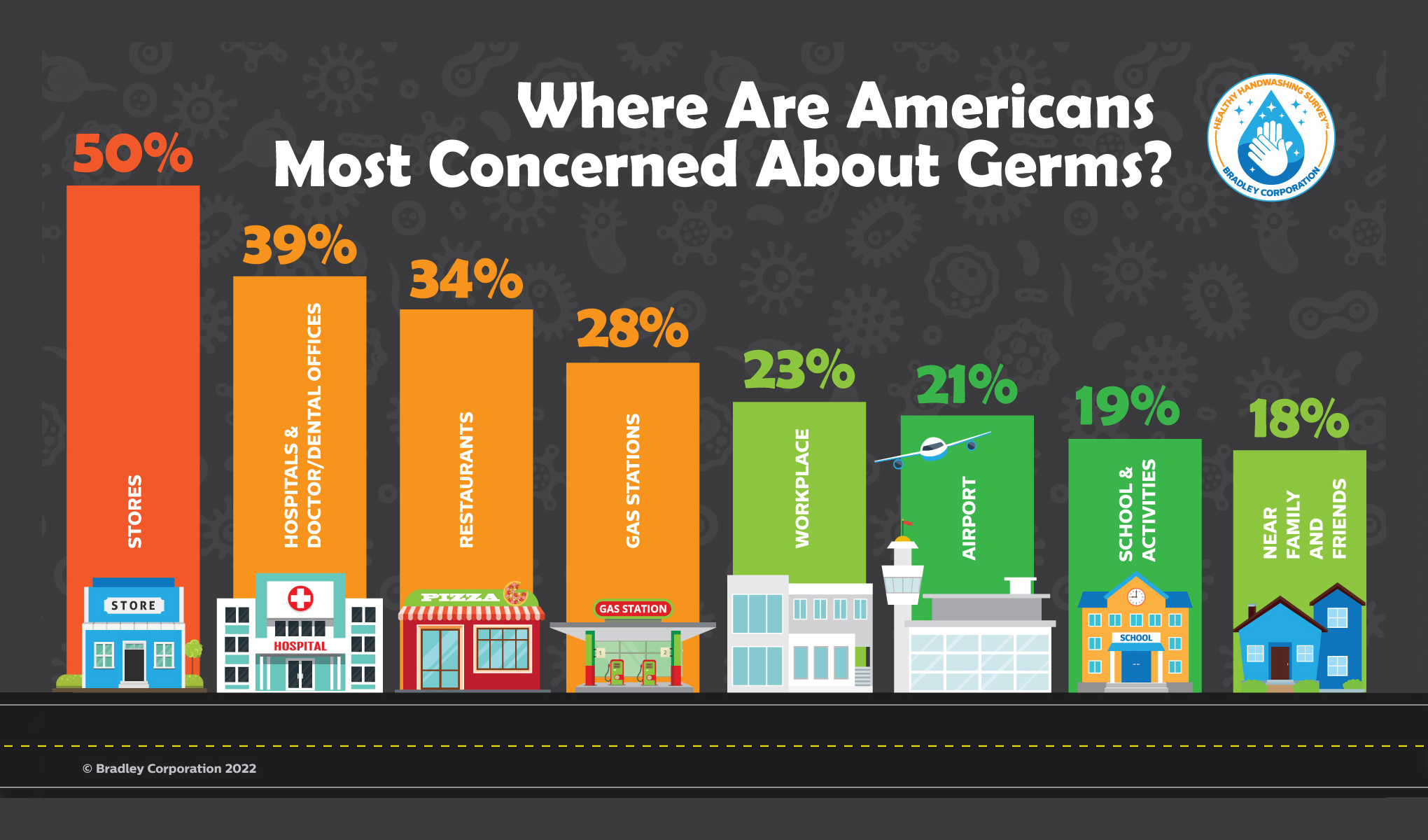
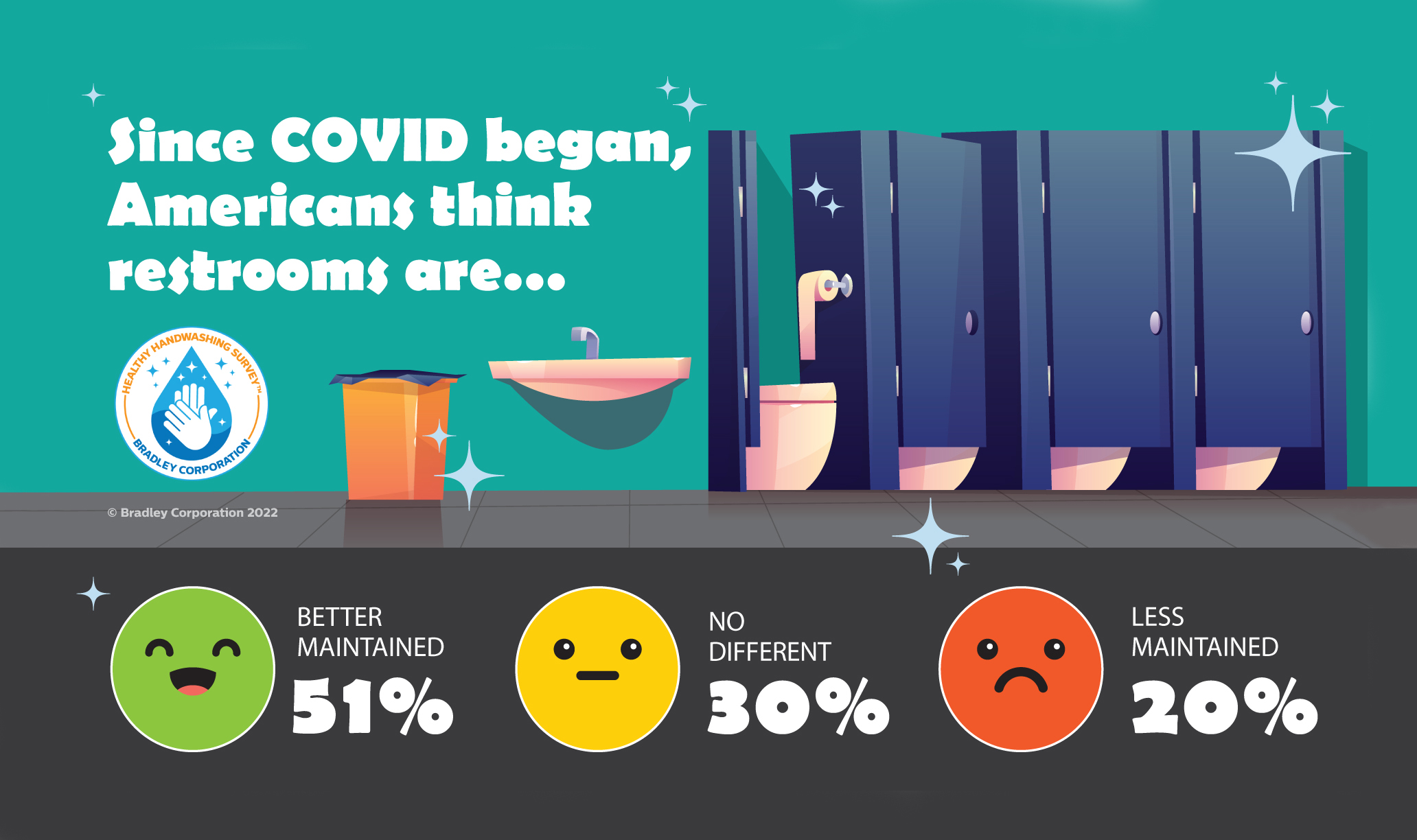
When asked what it would take to make the workplace feel safer — and invited to check all that apply — touchless fixtures topped the list at 27 percent, followed by well-stocked supplies at 22 percent; 35 percent said they already feel safe using the workplace restroom.
“Interestingly, two-thirds of office workers use a paper towel to avoid touching restroom door handles, flushers and faucet handles,” said Jon Dommisse, vice president of marketing and corporate communications for Bradley Corp. “This evasive action further demonstrates why touch-free restroom fixtures resonate so much with restroom users.”
Ken Wijaya, executive vice president of IAPMO R&T Lab, said manufacturers are struggling to keep up with the demand for touchless fixtures.
“While we have not seen an increase in testing of touchless fixtures, I have heard from manufacturers that a spike in ordering has resulted in back orders,” he said.
There was widespread agreement — 75 percent — that the condition of workplace restrooms is an indicator of how a company values its workforce in general.
Of those surveyed, 68 percent rated their workplace restrooms as excellent or very good, but at the same time, 62 percent were very concerned or somewhat concerned about the cleanliness of their workplace restrooms. Only 8 percent rated their workplace restrooms fair or poor.
Eighty-one percent of respondents said they had experienced an issue with a workplace restroom, topped by any dispenser being empty or not working at 62 percent.
Office workers (83 percent) are slightly more conscious than the general population (77 percent) about coming into contact with germs, and 6 percent more said they were very/somewhat concerned about contracting COVID-19. It also found that office workers were more greatly influenced by media coverage (83 percent to as opposed to 74 percent for the general public); their hand- washing habits were more impacted by news of new COVID strains (70 to 59); and that 87 percent were very/somewhat likely to maintain their hand-washing habits once the pandemic is over, as opposed to 79 percent of the general population.
Ninety-two percent of respondents said they are consciously taking steps to avoid sick
co-workers’ germs, with 67 percent being sure to avoid sick co-workers; 64 percent washing their hands more frequently; 51 percent using hand sanitizer more frequently; and 51 percent standing farther away when talking to them.
“Just as 9-11 changed air travel and the iPod changed how we listen to music, COVID has changed how we view handwashing and washrooms,” Dommisse said.
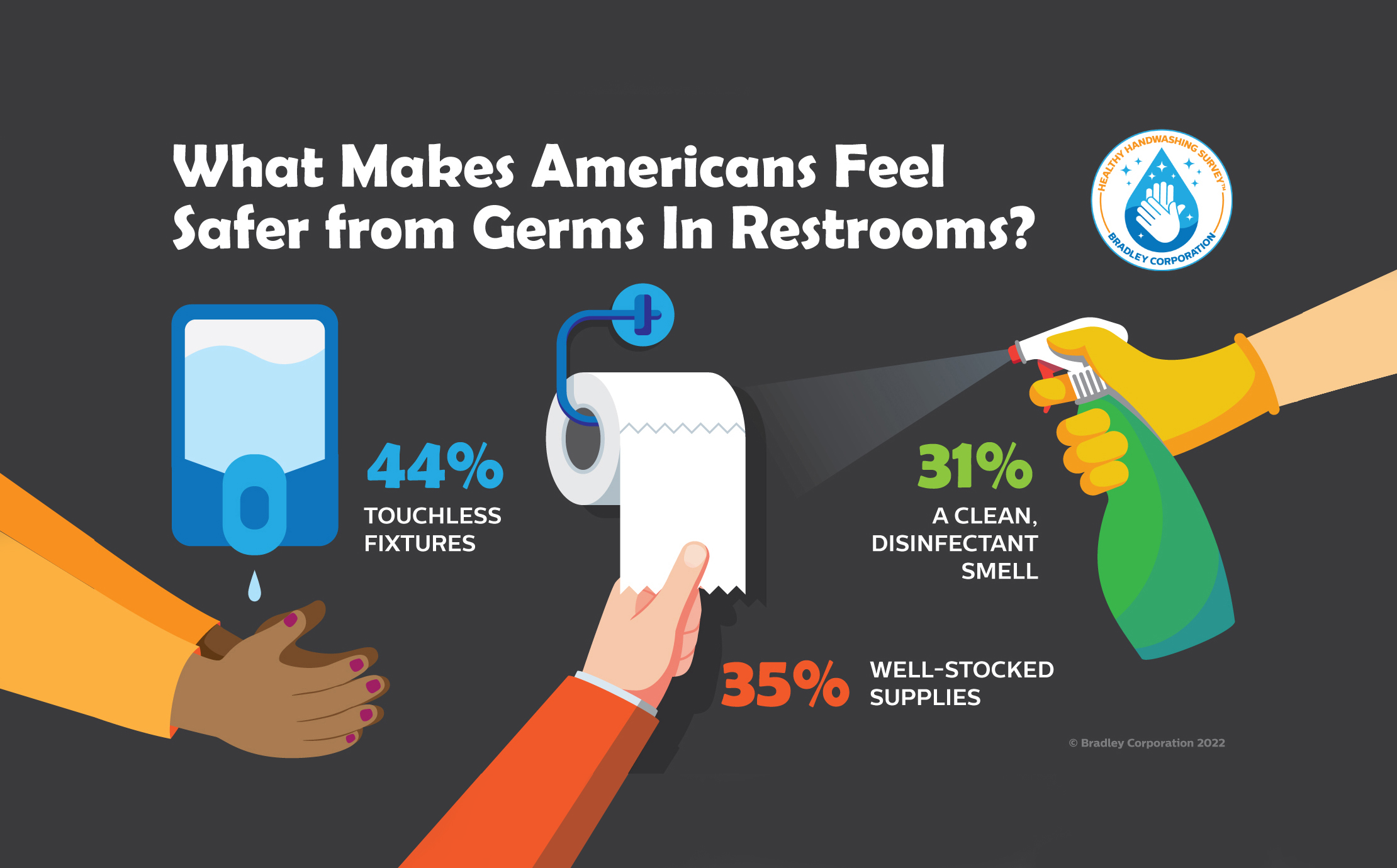
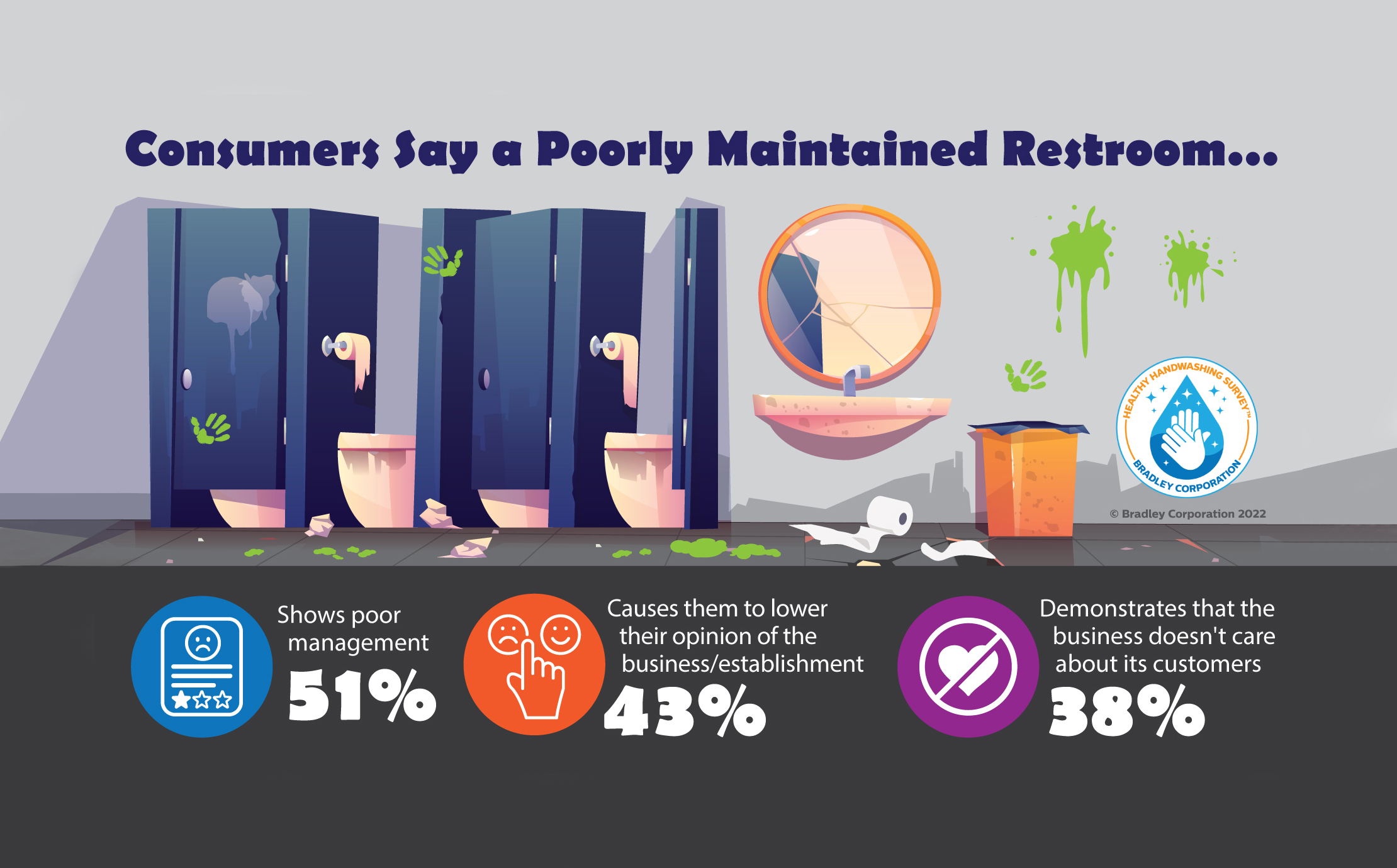
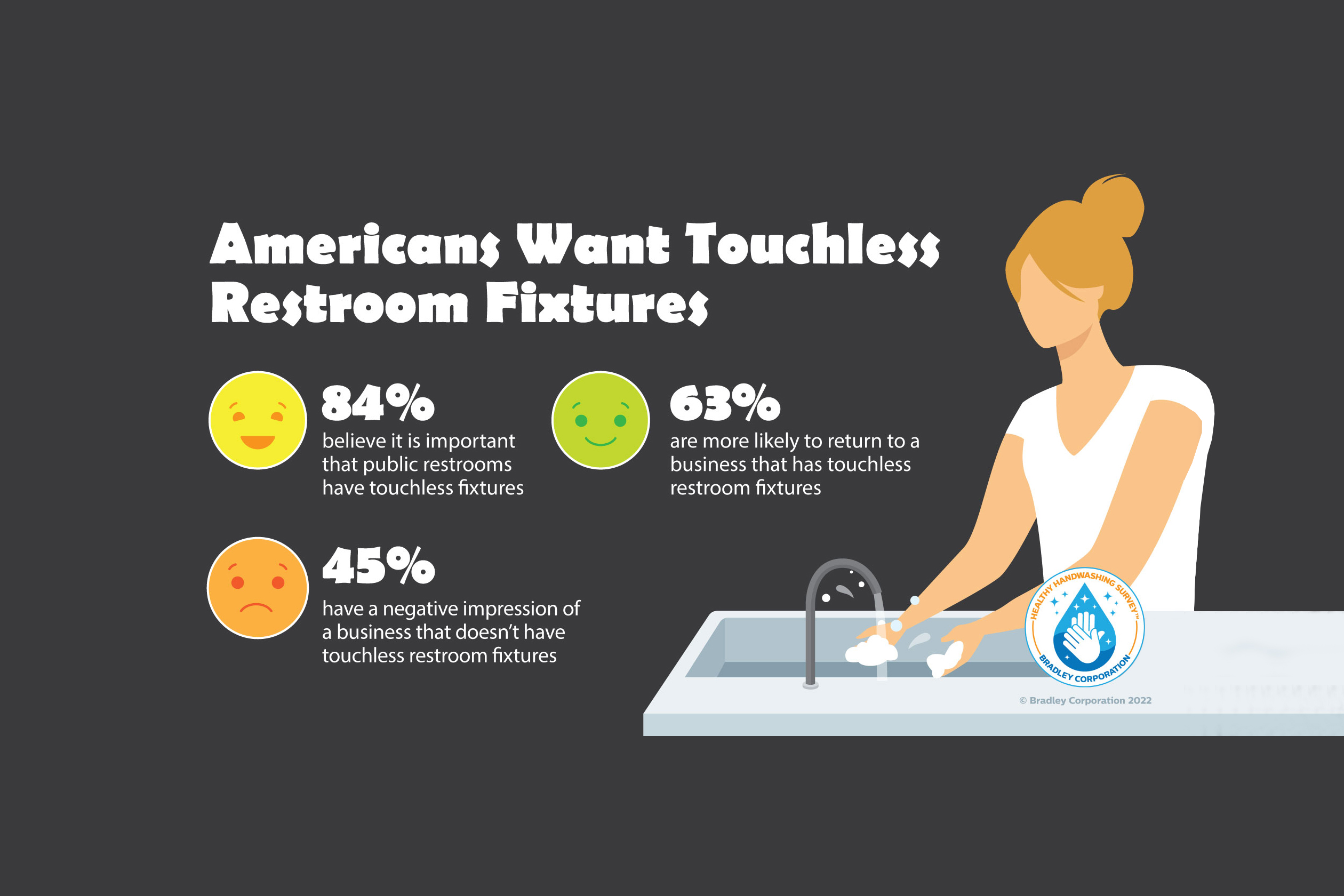
Additionally, a survey from early 2022 found that Americans are washing their hands less frequently than they did during the early days of the pandemic. In spring 2020, Americans were washing their hands about 10.5 times per day. Nearly two years later, they are doing so 7.8 times per day, a decrease of about 25 percent.
The Bradley Corp. surveyed 1,035 American adults early this year, with 46 percent of the participants being male and 54 percent female.
The survey also found that Americans are heeding the Centers for Disease Control and Prevention’s advice that hand washing is more effective in removing germs than hand sanitizer, though the latter remains a good option when soap and clean water are not available.
People are generally less worried about COVID-19, according to the survey, as 41 percent of respondents expressed a high level of concern about contracting the disease, compared to 53 percent in January 2021.
“Germ avoidance and handwashing diligence are two habits that should always be a priority,” says Jon Dommisse, vice president of marketing and corporate communication for Bradley Corp. “No matter the time of year or situation we’re in, lathering up, scrubbing thoroughly, rinsing and drying your hands is something that should be done consistently without fail.”


Mike Flenniken
Mike Flenniken is a staff writer, Marketing and Communications, for IAPMO. Prior to joining IAPMO in 2010, Flenniken worked in public relations for a group of Southern California hospitals and as a journalist in writing and editing capacities for various Southern California daily newspapers.
Last modified: April 22, 2024

